Yves here. Richard Murphy has posted what in theory is light fare, a piece on fall/winter women’s fashion as an economic indicator. He starts with the most watched sighting, skirt lengths. He finds that H&M, which makes much-decried “fast fashion” (low price, cheaply made items emulating hot looks where the buyer, who is often middle or upper income, can toss it after the current season when it is no longer worn by the in crowd) is showing short skirts, which he sees as bullish. However, Murphy can’t help noticing that the colors are drab to the point of being dreary. That sure looks depressed. So is this a mixed outlook?
As an aside, yours truly is bugged by the pervasiveness of cars in dull colors. When I was a kid, many cars, and not just the almost-endemic Volkswagen beetles, were in peppy colors: sunny yellows, zippy reds, happy bright greens, and a whole range of blues, from sweet robin’s egg to a sober navy. The narrowing of the palette is presumably not manufacturer driven; you’d think they’d sell bright colored cars if there was a market for them (and wouldn’t more distinct colors be safer? Cars would stand out more from each other while driving and might make for easier IDs upon occasion).. This looks like deeply internalized conformity.
One of Murphy’s readers argued that H&M buyers skewed quite young, and so H&M might include some short skirts and frocks regardless to suit their desire to show some skin for the purpose of attracting male attention. He recommended sanity-checking by looking at the new offerings from an upscale designer, Victoria Beckham. I picked out some items that were, um, striking:
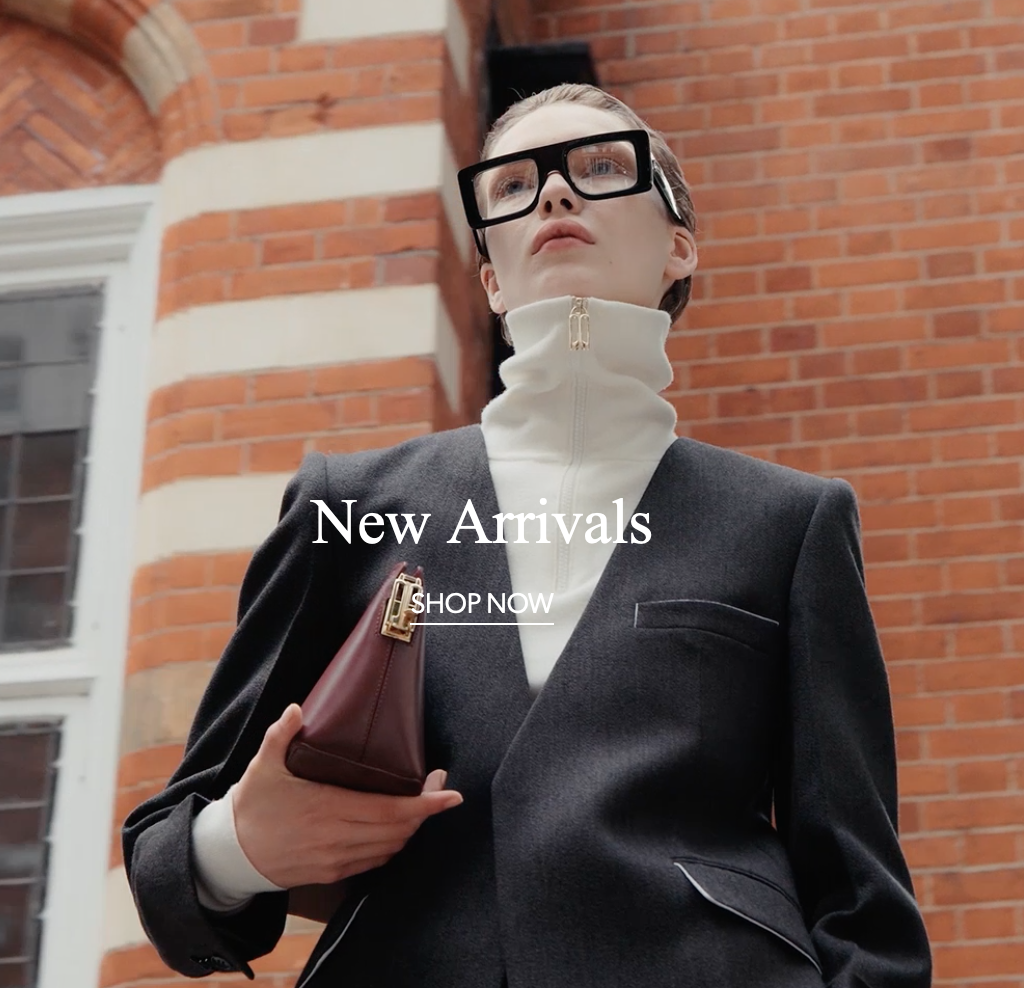
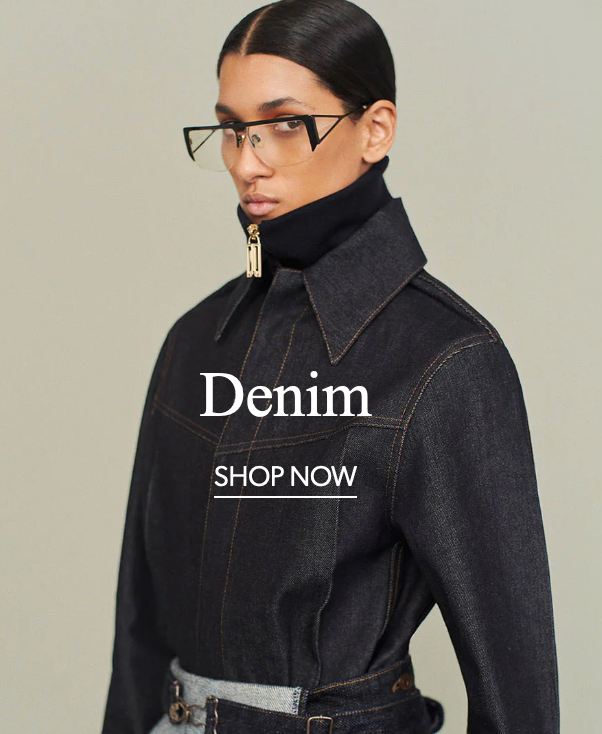
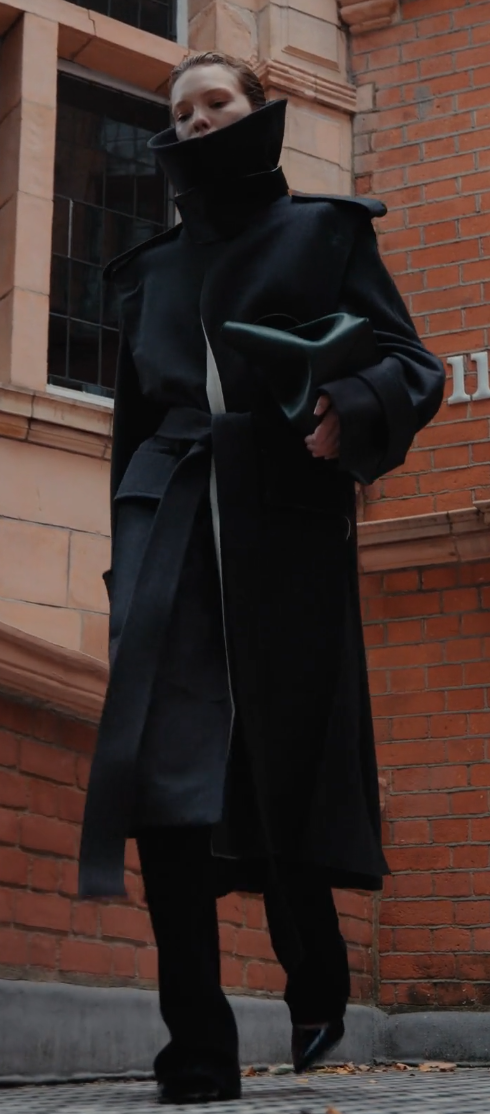
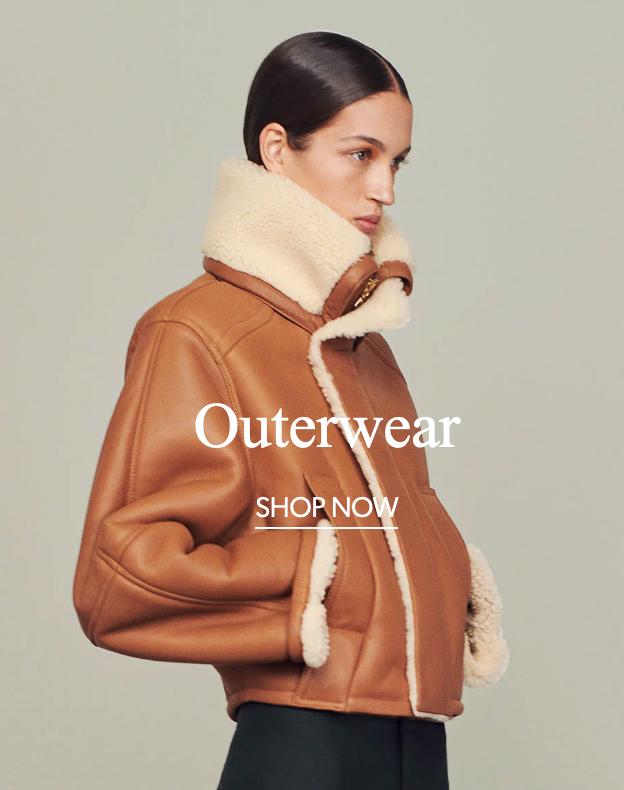
I like a turtleneck as much as the next person, and also have reasonable tolerance for edgy runway designs. But I found these styles creepy. Necklines so high they cover the jaw is on the way to being a burqa. And if you look at the last photo, the short shearling jacket, you can see it was posed so that no hand or arm skin was visible. The potential buyer can see both shearling cuffs but no flesh.
These outfits seem monastic, as if buyers are being prepared for a more ascetic life.
Admittedly this is only one designer. Do readers have confirming or conflicting sightings?
By Richard Murphy, part-time Professor of Accounting Practice at Sheffield University Management School, director of the Corporate Accountability Network, member of Finance for the Future LLP, and director of Tax Research LLP. Originally published at Fund the Future
I think it fair to say that this blog does offer a slightly male-biased view of the world. That is unsurprising: I am male, and this blog is about how I see things.
That said, I do take an interest in fashion. I actually subscribe to the online version of Vogue (it’s £12 a year). I don’t do so because I buy such fashion. I suspect that is pretty obvious. I have, however, for decades thought that fashion reflects the public mood. Looking at where it is going is a very strong indicator of where the economy might be following. Danny Blanchflower would call this a part of the ‘economics of walking about’. For that same reason, I observe people in the street: their collective style says a lot about how we feel.
In this context, an email arrived in this household from H&M yesterday, advertising its latest, more upmarket collection. This is a screenshot from that mail:
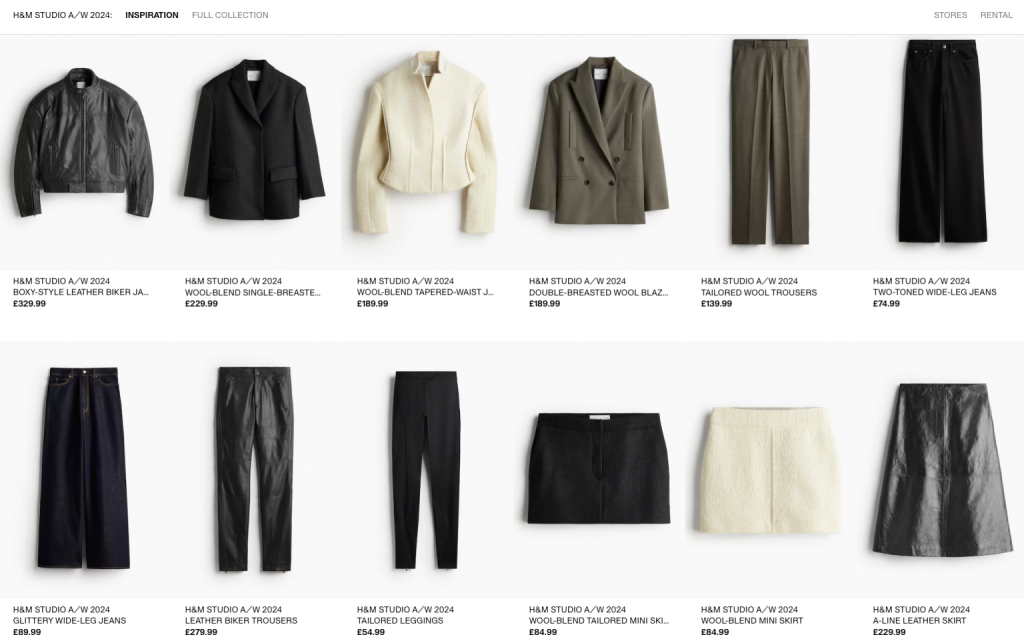
The message is surprising. Of the three skirts on view, two are short. That might suggest a degree of optimism not yet apparent in the economy. I have long believed that there is a marked correlation between the distance between the hems of skirts and the ground and the economic mood of people. They go higher together. And on the street, they are very long right now.
On the other hand, look at the colours. They are dark, sombre, depressing and downbeat. That’s the message I am taking from this. There really is very little optimism in the economy if colour has disappeared from the palettes of fashion chains.
This proves nothing, of course, except for one thing. These fashion houses spend a great deal of time trying to work out what colours to offer. H&M seem to be reflecting a wider view on this issue. The mood is decidedly downbeat. I have no idea where Rachel Reeves thinks growth is going to come from in that case: the signs of it happening are not out there.


While your point about the dominance of whites, blacks, greys and charcoals in auto colors is inarguable, in recent years I’ve also noticed a new wave of pukey greens, yellows, reds and oranges… and have wondered what they reveal about the zeitgeist. While “colorful,” they don’t have the bright, perky, upbeat feeling of those older shades…
As for the women’s fashion, those high, tight collars to me suggest rigidity and repression, ideal for a time of conformity, propaganda and corporate dis-infotainment; maybe next season they’ll go all the way and cover their consumer’s mouths.
Observations about car colors and culture. I read years ago that in Japan white is the dominant color for cars because of Japanese ideas of cleanliness. White is important in Shinto, and Shinto and its ideas still matter to Japanese.
In the Undisclosed Region, some smaller cars are getting more playful with color. I just saw two Microlino — little, one-door cars — one navy blue, one crimson. There is also a FIAT Topolino, the new edition, tooling around my neighborhood — the car is sea-foam green and attracts bystanders.
As to exposure of the neck and “optimism”: Yves Smith is on the mark. Years ago, in Sexual Personae, Camille Paglia made some brilliant remarks about exposing the neck and how much it indicates sexuality in Western culture. This goes for men, too. So the high neck is indeed monastic. Touching the chin indicates to me that the wearer is being forced not to speak.
At the same time, I see the big glasses: When big glasses are in vogue, things can get revolutionary. I am thinking of some shots of Janis Joplin in glasses.
In the West, black is always a color of some ambiguity. Tommaso Campanella called it “traitorous,” after the Renaissance, when Italians had worn bright colors. The baroque was black.
However, I am not sure that the grays and blacks shown are “downbeat,” to use Murphy’s word. Gray and black can be quite stylish and even sexy. Wearing black doesn’t automatically turn one into a Dominican.
The preference for white cars is not just a Japanese trend, but a global one. In fact, Europeans are the outliers when it comes to car color preference.
I believe that research has been done showing that white cars are safer, being more conspicuous in most conditions (snow excepted).
Try living in a hot climate: A black car is not ideal. OTOH, I live in Canada where white cars are not popular.
This may very with where you live in Canada. In the Toronto area, white is very popular, perhaps because of the substantial Asian-Canadian community.
In recent decades the choices for most models have been rather grim: black, silver, gray, white, with dark blue often the most exciting option. If you forget where you parked at the mall and drive a gray car, finding it may take hours….
“Since the mid-2000s, Canadians have seen a decrease in the popularity of silver cars in favour of white colours.”
https://www.carfax.ca/resource-centre/articles/what-is-the-most-popular-used-car-colour-and-how-does-it-affect-resale-value
Not even in a “hot” climate. I live in the Northeast, and when buying a Toyota 4runner opted for white because on the test drive I discovered that the air conditioning was somewhat weak, and waiting for it to cool down the black truck I was driving was decidedly unpleasant. The white is a LOT cooler after it’s been sitting in the sun.
I don’t know DJG – those dressed in austere colors with high necklines can still get their groove on. ;)
The New Drab has been going on a while. I remember reading at least a year ago about the “wet putty” car paint look that’s sweeping the US. It was not so prevalent in the UK and then Bam! it seemed hard to avoid. The original article was by the author of McMansion Hell, I think, but I couldn’t find. This link explains more.
https://www.latimes.com/business/story/2023-03-07/la-fi-car-paint-trend-nissan-porsche-hyundai
There”s something about this matte, slick look for cars that sets my teeth on edge. The drab colours are only half of it….
Car colours are weird. There is very little xhice in the UK. Audi have about six colours, half if them black or grey! Specifying one means waiting months for your car to be built. So even new buyers just take what is at the dealer. And the same forces determine secondhand cars with a lag. Ergo individual preference has a vanishingly small impact on what colour car you drive! It seems to be an industry in wilful denial of the consumer. I will enjoy shiny bling Chinese EV’s eating their Teutonic lunch. :-)
Ah, it wasn’t Kate Wagner of McMansion Hell, it was Blackbird Spy Plane.
https://www.blackbirdspyplane.com/p/why-do-new-cars-look-like-this
I don’t know about the big glasses: when I see them, I think of Nazi fanboy and .01 per center sycophant Phillip Johnson.
In my experience, colors other than plain white and black are options that cost more. I had a “black sapphire” SUV that was in a fender bender and it cost extra to get the part ordered because of the sparkly paint. That was my last car with sparkly fancy paint. Plain black or white is fine with me.
I’m late to this party, but a couple of points…
1. I recall reading a decade or so ago, I think, on The Truth About Cars site, that the silver and metalic red and blue were almost universal on the lots because a given car in one of those colors would move off the lot faster than any car in a more ideosyncratic color. The color limitation was supplier, not customer driven.
2. About 50s colors: Back then, as I recall, people tended to order cars for delivery weeks later, not buy one off the lot. Color was another option, and one was as good as another as far as the maker was concerned. If I’m wrong about this, I’m sure other oldsters can correct me.
Having worked in the financial district in Boston for many years, I can tell you that palette is 100% standard at least in that metro area…black grey grey grey and more black
To be fair, everyone in Boston is horribly depressed so I suppose this makes sense
I fondly remember the psychotic Jacob’s Ladder aura of the Red Line as I rode it in the wee hours of the night returning from The Institute.
Boston is cursed.
According to this Japanese article, merits of a white car are that it’s easily visible on the road, suitable for any age or gender, hides minor scratches well, and therefore has a higher resale value. These days black cars are also very popular in Japan, also due to resale value.
In the US, a close relative recently purchased a new Subaru in an eye-popping highly reflective blue, and got a lot of comments about how this would attract unwanted attention from the wrong kind of people.
My eye-popping reflective blue Subaru was stolen and completely stripped by car thieves. They meticulously and curiously stripped all interior parts. The wheels and battery were also removed, yet the blue body was untouched. By the time my car resurfaced in a towing lot, I had racked up $3000 in towing lot fees, which included extra fees for towing a car with no wheels. I suspect the towing lot is so profoundly corrupt that they encourage car thieves to steal cars just so the towing lot can rack up extortionate fees. I also suspect those meticulously removed parts magically appeared again right before my car was put up for auction. Do you know where a great place to learn how to steal car is? A towing lot.
In accordance with the other post today about climate change and genocide, I think I will deliberately not buy a new car. And I certainly won’t buy one that attracts attention. I haven’t rode a bicycle in twenty years, but I think I should start.
My friend worked for a division of a Japanese car company. The expat management let it be known to the American locals that blue cars, especially of their brand, were discouraged from the parking lot as they symbolized ostentation.
Do you know where a great place to learn how to steal car is? Asking for a friend…
Jail.
Lotsa white trucks parked @ an eatery in the Central Valley is usually a good sign the tucker is decent.
Of course white and grey cars just blend in to the background whereas colourful cars – like loud, noisy ones – can attract the attention of the police for no other reason than they are noticeable.
It warms my heart to think how much money I have not spent on clothing by working at home.
I do not think short skirts are bullish. In fact the opposite.
My clairvoyant powers suggest to me it is a coping mechanism.
The human female seeks Lacanian psycho-pleasure and to appear fully impregnable in poor economic times, in order to attract a hopefully wealthier mating partner.
As material conditions deteriorate, the human subject will increasingly retreat into commodity fetishism as a means to handle the heavy mental burden that this is all pointless and will soon come to an end.
I posit that in two decades’ time most humans – male and female – will be walking around almost entirely nude, except for tastefully small amounts of dress to enhance the erotic imagination of the viewer.
I’ve noticed 80s era shoulder pads are back.
Raised by a costumer, and taught that fashion recycles, i’m struggling to recall the nudity trend, at least in my lifetime, but that’s not to say it wasn’t the hot thing at one point in human history. Dark ages maybe? Eden times?
Maybe the woke revolution will soon include instructions on how to decolonize your body from clothing, but nobody better look at me because i’m entitled to not be looked at, then they can team with the green crowd who’ll re-appropriate the jungle tribe thong motif, with all the requisite nuance and problematizing to make it a-ok. I think you might be on to something.
Idk, all the thumbnails look like a less shiny version of the wardrobe from The Matrix. The millennials are the target audience now, we as a generational cadre are annoyingly obsessed with looking sophisticated – somehow that scheme and palette says sophisticated? Who said (paraphrased) striving to look different in the exact same way? Edward Abbey? Ken Kesey? Don’t remember doesn’t matter probably lots of people have said that.
As the boring becomes progressively haute, i shall recommit myself to the solemn responsibility of revelling in the gauche. All things in moderation, especially moderation.
It would make sense to me that short skirts or other clothing geared towards nightlife is more popular during more prosperous times. Going out to a club or bar is expensive. Clothes, even fast fashion, are expensive. Being able to afford clothes that you only wear in a specific context is a luxury on a fixed income. Going into fall, it’s going to be colder, so if you’ve got a budget, buy for utility.
I wonder if that color pallete and that style gives the impression of utility and longevity. Grays, blacks, and browns remind me of older, men’s jackets and suits. The wool blazer and trousers look a little vintage and wool isn’t synthetic. The leather, too, evokes grandpa’s closet–clothes that have stood the test of time. Of course, all of this is probably sweatshop made and built to breakdown immediately.
It’s also unpopular among a lot of younger people to look like they have money. It’s not as obvious, but this kind of thing reminds me of the folks wearing Carhartt for fashion. Among some younger buyers, status is shifting away from the ostentatious to what they think working class styles are, but still buying the expensive, high end of “work clothes.” Pair that with all the TikTok trad-trends and it makes sense those people are leaning into more conservative clothing choices. At least they’re not selling tattered t-shirts and jeans for $300 each. I guess people have realized they don’t want to look that poor.
Living in a bigger city, narratives around crime also encourage ascetic dress. We’re in a housing crisis and when people see more people sleeping on the street and on the train and that stokes their fear that they’re going to be targets for crime if they look too nice. Those folks get nervous when they have to walk through a tent city on their way to work.
I don’t know that I would have picked Victoria Beckham, her line has been verging on bankruptcy for years. And part of it maybe that restrictive, must be thin and preferably tall lines are pretty common to it the few times I have looked.
One of the top selling designers of the past few years is Ellie Saab.
vogue on Saab’s fall 2024 collection
It is less restrictive and uptight, but the palette is drab and very army drab.
I remember Elvis preferred high-collars because he was self-conscious about his slightly longer neck
I decided I wanted a silver gray car because cars are made of metal and I didn’t want to obscure that fact. (Perhaps garish colors denote plastic?) Also I didn’t want my car to stand out (safety in numbers (?) Color is a complicated subject.
The highly influential early 16th century Book of the Courtier recommended that the perfect young man wear black to show seriousness — and all of Europe’s upper classes immediately took his advice. Black with a brilliant white linen collar to denote cleanliness. “Youth should have a touch of old age and old age a touch of youth” to paraphrase Cicero.
I think colors in clothing also reflect or respond to the prevailing weather and local geography. I noticed in Japan that the color scheme of the wildlife (birds and butterflies) was white and black with red highlights, and that this was also a predominant color combination of Japanese outfits. Subtle pastels shine in the light of northern climates and more brilliant colors in warm and tropical regions. Black also absorbs heat, which may be important in areas with cold weather.
I’m always astounded by the brilliant colors worn by ordinary people in the earliest color photos, however.
The high neck whatevers make me think that the designers really liked Auron from Final Fantasy X.
People usually go for the darker colors to look thinner. That doesn’t line up with all the reports about weight loss shots being the thing to do.
I thought car colors were very much driven by the manufacturers. Too much trouble and hassle to change production line colors and transport color choices around the country to buyers, much easier and cheaper for them to limit their palette. For several years SUVs were limited to black and white unless you placed a special order, which could take forever. It was soccer mom white or FBI black.
Now they are shifting the palette around, and I suspect it’s just to make sure a 5 year old car starts to look dated if it’s from the old color list. Offroad SUVs are starting to come in a grotesque putty shade or revolting spot-from-the-sky orange. Yuck.
It’s turtles all the way down from the neck.
I can’t comment about skirts high or low, but colors… I’ve lamented the penchant for wearing black and grey, which in most cities seem to be de rigueur. I get it, darker colors don’t show dirt but I find it depressing.
Even worse than that, there seems to be a trend now to paint houses a very dark grey, at least around here in the PNW. I wouldn’t be keen to drive up to my dark grey house myself. I think it’s the general zeitgiest – your home isn’t just your castle, it’s now your fortress. Since the pandemic people seem to be drawing inward.
Here is what New York Fashion Week predicted for fall/winter women’s fashion palette, based on Pantone’s own choices:
https://www.fashiontrendsetter.com/v2/2024/02/15/pantone-fashion-color-trend-report-autumn-winter-2024-2025-for-new-york-fashion-week/
Admittedly my time with fashion lies in the past.
Yet, I never understood this fixation on H&M.
The details were all off.
The material was bad, the sewing, the design, the colours. I really found it dreadful.
The only space where this proved to be useful was film/TV.
For one you can make the fashion look much better than it truly is by lighting the place which is part of the job – make it look good.
Second, it doesn´t weigh on the budget.
As cars go – A colleague wrote an essay about this for a major daily some 15 years ago about why everything was silver back then – bringing in all kinds of references even the German saga of The Nibelungen and Terminator – eventually stating the amorph quality which silver is associated with in addition with invincibility & evasiveness.
I have lost track of car colours today. There are more pressing subjects.
(But I do remember statistically black cars are more easily overlooked in traffic and are thus more often involved in accidents. The reason for that is actually science and how vision processes black.)
p.s. Turtlenecks I would assume pop up repeatedly.
And I wouldn´t put too much significance on political atmosphere and fashion.
It would be interesting though to read a survey on fashion in Ukraine´s Western cities.
If the skirts are short there is it because they are feeling the end of the world nearing? Or because men are such rarity women are in contest for partners? Or because they defy Putin? Or do they shorten the skirts in order to send the rest materials to the front to support the troops (just kidding)?
But sophisticated pseudo-answers in the tradition of French life-style philosophy will take you pretty far without achieving anything.
Which doesn´t mean it´s not fun.
re: Turtlenecks & movies
Rewatching the uneven “Star Trek” reboot from 2009.
Entire intro with people from Vulcan wearing turtlenecks.
Costume department: Michael Kaplan, who also worked on part II “Into Darkness” where the villain is into turtlenecks, too, I believe.
Kaplan´s first major credit: Blade Runner 1982.
Any turtlenecks there?
Hell, yeah.
(Sean Young, Rutger Hauer. Anybody? Even Harrison Ford a bit.)
You could come to the obvious conclusion Kaplan associates lack of humane and lively emotion with turtlenecks.
Turtlenecks are eventually “dystopian” by design. Literally. Film has to apply simple ideas everyone gets or at least “feels”.
Reference via Kaplan´s too short Wiki:
“Tom Cruise Suit Style Guide from Mission Impossible Fallout”
https://www.tomsfashion.com/blog/tom-cruise-suit-style-guide-mission-impossible-fallout
No turtlenecks there I believe (However Rebecca Ferguson had one in the last MI-installment I would think…)
Colours are for summer, in winter everyone starts wearing predominantly black, gray or bland for some weird reason I’ve never been able to discern.
Having said that, I think fashion trends likely will be affected by climate change and the economy, rather than expressing sentiment about the economy.
I think as the climate and therefore economy worsens the trends will probably move away from disposable and short fashion cycles/trends which have significant negative impacts on the environment and are, frankly, irresponsible, exploitative, and we might move more toward more constructive, utilitarian, unisize, unisex and perhaps modular re-usable fashions. Maybe even toward apparel rental rather than ownership, toward fashion affordability, less or reduced class difference in clothing.
There was an exhibit at the London Museum of Design…oh, I see it’s still going – https://futureobservatory.org/programme/exhibitions/fashion-exhibition-tomorrows-wardrobe – which is well worth seeing if you’re in London, speaks to this topic.
My personal prediction is nobody wil be wearing Gucci, driving fast cars and living in big houses while the world is burning, suffering and dying, not if they value their lives.
Sorry, my favorite winter coat was a hooded hot pink parka with black trim. I loved it SO MUCH I got excited (when the original showed serious signs of use) that I was over the moon when I found a vintage one, the exact same coat, in my size….and never worn! I have taken it here even though odds are zero I will ever use it (as in choose to go north when it is cold enough to allow for its use).
All this talk of grey put me in mind of an article in 2023 n+1 magazine. ‘Why Is Everything So Ugly? The mid in fake midcentury modern’